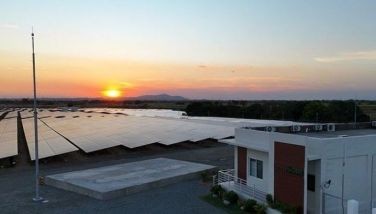Seamless transport

In his second visit to Europe starting this weekend, President Aquino should take time to try out the railway system.
Then he might have an idea of what efficient, well-maintained railways can do to ease city traffic, speed up cargo transport and promote economic activity outside major urban centers.
All over Western Europe, trains offer efficient and affordable mass transportation. They contribute to European tourism and enhance the business environment. There are high-speed express trains, slower commuter trains, overhead railways and subways even in flood-prone areas.
Most international airports in Europe are connected to city centers by trains, whose fares are typically much lower than taxis. Airport bus shuttles, which are slower but cheaper than the trains, are also common.
Train services can be disrupted by labor strikes. But generally the trains are on time, with boards counting down the minutes to arrival and departure. Rides can be smoother than air travel. The trains are clean, comfortable, with clean toilets and food available for purchase on board. Train stations have cafés, dining areas and places for last-minute souvenir shopping.
Buying tickets is also a breeze; online ticketing is common. Visiting Austria, I reserved and paid online in Manila for train tickets, taxi rides within Vienna, and a tour to Salzburg. All the trips proceeded precisely as scheduled, right down to the minute: 16 minutes to the first train stop, 12 to the next… taxi waiting at this precise moment outside the train station. Even if drivers spoke little English, I could get by with hand gestures and a paid ticket.
Predictability of schedules and overall reliability of mass transportation – for both passengers and cargo – are crucial in ease of doing business. It’s little wonder that European countries occupy the top ranks in annual international surveys on ease of doing business and national competitiveness.
Several European countries also operate city trams to augment the buses, taxis and subways. In the Swedish port city of Gothenburg, the tram is popular among tourists. While in Berlin last week, I found moving around the city easy and affordable as I transferred from subway to bus to tram.
* * *
On the eve of last week’s traffic catastrophe on NLEX due to the unsurprisingly uncoordinated and poorly planned transfer of shipping containers from the Port of Manila to Subic, I took two train rides in efficiency-oriented Germany.
The first was from the capital Berlin to the city of Wolfsburg, home of Volkswagen’s original plant and Autostadt or “car city,” 176.2 kilometers away. From Wolfsburg I took another train to the port city of Hamburg, a distance of 135 kilometers.
Both rides took just a little over an hour on trains traveling at up to 250 kilometers per hour. On the first ride I had lunch in a restaurant: a succulent steak cooked German style, capped with a luscious cheesecake. On the second ride I tried the house blend cappuccino, and was not disappointed.
If we have such amenities on our trains, the government will have no problem persuading private car owners to leave their vehicles at home.
Germany’s trains are run by Deutsche Bahn AG, or the German Railroad Company. DB currently operates 25,000 trains that transport 11.4 million passengers daily all over Europe, 7.4 million of them in Germany alone. DB trains also transport a million tons of goods daily.
The company, which also operates cargo trucks, 2,500 cars and a popular rent-a-bike service with 8,500 bicycles, buys trains from other companies such as Siemens and Bombardier but operates the railway infrastructure including the rail network, traffic stations, and traction transport logistics.
Its nine business units employ about 310,000 people. In 2007, DB bought into US company BAX Global Inc. and the next year opened logistics service firm DB Schenker in Metro Manila, which now employs 1,200.
Last year the DB earned over 39.1 billion euros, and intends to plow back 12 billion until 2016 for modernization. DB personnel constantly look out for glitches in the system even as the company spends an average of one billion euros annually for maintenance.
* * *
While Metro Manila commuters must contend with accidents, delays and regular glitches in inadequate light railway services, and wonder whether we will ever see a modern railway system operating at least in Luzon in our lifetime, European railway operators are already moving into the next phase: reducing their carbon footprint and aiming for sustainable business success.
DB, for example, has embarked on a noise reduction program and has appointed a “CSO” – chief sustainability officer. Aiming to be known as an eco-pioneer, the company now has 600 electric cars in its rent-a-car fleet.
Renewables account for about 24 percent of the energy used by the company, which plans to eventually shift completely to renewables, according to Markus Rometsch of DB’s Strategy Process.
DB rail and truck drivers are also undergoing training on proper behavior for fuel efficiency. These include mild acceleration and avoiding sudden braking.
DB’s corporate vision is to “offer seamless transport.” This should also be an objective of any Philippine leader with a vision for his country.
- Latest
- Trending




















